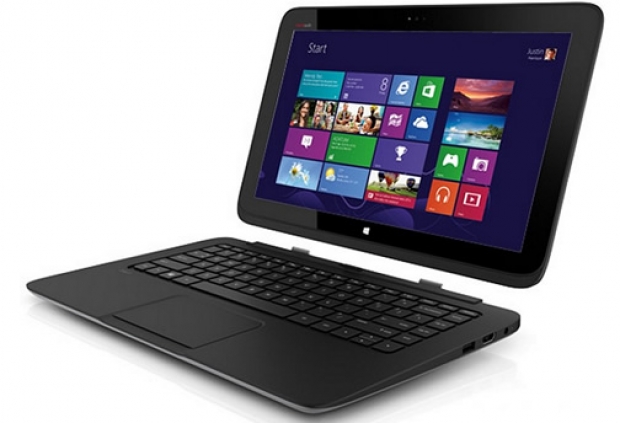According to the beancounters at IDC, Germany cannot get enough of two-in-one designs and will be the largest 2-in-1 market in Western Europe by the end of 2015 with almost 800,000 detachable devices shipped over the four quarters.
Germany is the largest Western European PC market and was one of the first countries in Europe to adopt 2-in-1s when they were introduced at the beginning of 2011.
Detachable devices have become increasingly popular among German consumers and businesses, with volumes growing over 30 per cent in 2014.
Driven by a strong mobility trend, demand has soared and in the second quarter of 2015 Germany became the largest two-in-ones Western European market, with shipments exceeding 120,000 units. Interestingly, 95 per cent of the devices run on Windows and more than half are deployed in businesses.
Chrystelle Labesque, research manager, EMEA Personal Computing said that two-in-ones are the only product category with a positive outlook over the next four years.
"This is due to an acceleration of the mobility trend, driven by increasing digitalization of business processes in German companies and by the release of Windows 10, which promises to overcome integration issues with existing IT infrastructures, and the rising popularity of this hybrid form factor among consumers as improved hardware meets both mobile and content-creation needs."
IDC expects two-in-ones to continue growing strongly and to represent 15 per cent of total computing devices shipped annually to Germany by 2019.
"Inevitably smartphones and tablets have put pressure on the market for traditional form factors, such as desktop and portable PCs, through budget or usage cannibalization. Nonetheless, they have also driven hardware innovation and have transformed the way consumers and businesses use their devices, making multidevice ownership the norm."
Besides notebook replacements, though, IDC's latest survey of tablets in enterprises highlights the incremental opportunity generated by two-in-ones deployed in addition to another computing device. The research shows that among more than 400
German enterprises surveyed, only in 40 per cent of the cases are two-in-ones the only device provided to their employees, usually to replace a portable or desktop PC. The majority of enterprises would deploy two-in-ones in addition to another computing device.
Samsung is doing really well out of this, thanks to its broad portfolio of high-end, mid-range, and low-end devices and substantial marketing efforts. It is the largest supplier of smart connected devices in Germany in 2012 and continues to lead the market with almost a third of total shipments.
Apple has been ranked second in the German SCD (smart connected device) market but as its share is mainly driven by demand for its smartphones and tablets in the consumer market.
Lenovo, by buying local outfit Medion has almost doubled its market share over the last five years. From ranking 10th in 2011, it is now the third-largest SCD vendor thanks to a broad portfolio covering all devices, innovative hardware, a wide range of price points, and significant investment to increase brand awareness in the country.
|
IDC: SCD vendor market share ranking in Germany |
||||
|
2011 vendor |
2011 market share |
1H15 vendor |
1H15 market share |
|
|
1 |
Apple |
19.5% |
Samsung |
30.2% |
|
2 |
Samsung |
18% |
Apple |
22.1% |
|
3 |
Nokia |
9.2% |
Lenovo |
6% |
|
4 |
HTC |
7.1% |
Sony |
5.5% |
|
5 |
BlackBerry |
5.9% |
LG Electronics |
4.8% |
|
Others |
40.3% |
Others |
31.5% |
|
|
Total |
100% |
Total |
100%
|
|




